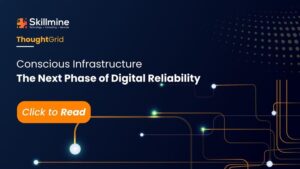According to an IBM research, the average cost of a data breach was $4.45 million in 2023, the highest average on record. In an era where the healthcare industry is embracing digital transformation to enhance patient care and streamline operations, the paramount concern remains safeguarding sensitive patient data. As healthcare organizations increasingly rely on interconnected systems, the need for a robust defense against cyber threats has never been more critical. This is where the Security Operation Center(SOC) services comes into the picture. With its cutting-edge strategies employed to protect against evolving threats, SOC plays a great role in preserving the sanctity of patient information.
Why is Security and Operations Center (SOC) imperative in the realm of healthcare?
While cybersecurity concerns have burgeoned across industries, the healthcare sector stands as a particularly vulnerable domain, presenting multifaceted challenges.
- The healthcare industry harbors vast volumes of highly sensitive patient information, a treasure trove for cybercriminals due to its potential for lucrative gains on the black market. This data becomes a prime target for identity theft, enabling unauthorized access to expensive medical devices, specialized services, and prescription drugs. Additionally, it serves as a gateway to fraudulent acquisition of medical benefits.
- The critical nature of patient data in healthcare cannot be overstated. Cybercriminals recognize the leverage they hold when they encrypt or manipulate data for ransom, disrupting essential services.
- Compounding the challenge is the necessity for diverse stakeholders, including patients, doctors, pharmacies, and researchers, to access healthcare data seamlessly around the clock. However, cybersecurity is increasingly viewed as a potential hindrance to achieving complete and unrestricted data access.
- The state of technology in the healthcare sector further exacerbates the vulnerability. Many healthcare organizations lack the resources or inclination to invest in upgrading their technological infrastructure, rendering them susceptible to sophisticated cyber threats. Compliance with stringent regulations, such as those set by HIPAA, adds an additional layer of complexity.
Benefits of SOC in Healthcare
Security Information and Event Management (SIEM): Healthcare enterprises comprise a myriad of technologies supporting both business operations and patient care, including workstations, servers, network infrastructure, and cloud-hosted applications. Centralizing logs from these diverse technologies enables organizations to access detailed log information and real-time alerts, ensuring smooth and efficient operations. SOC plays a crucial role in monitoring these tools and offering actionable guidance for remediation.
Connected Medical Device Security: The advent of Internet of Medical Things (IoMT) devices has become integral to effective patient care and desired outcomes. However, healthcare organizations may inadvertently jeopardize lives by overlooking the security of these devices. Implementing a connected medical device and IoT security program assesses existing security practices, identifies vulnerabilities, and establishes protocols to mitigate risks. Healthcare cybersecurity professionals at SOC initiates the process by identifying each IoT device in the organization’s network, implementing proper security controls, and adhering to organizational standards.
User Awareness, Education, & Managed Phishing: Phishing remains a prominent method for cybercriminals to infiltrate healthcare networks, yet a significant portion of health IT employees never undergo simulated phishing tests. Paired with insufficient employee training, this creates vulnerabilities within healthcare organizations. Managed phishing and employee education which are integral components of SOC services, enhance awareness and prompt a proactive approach to this threat. Through controlled and organized phishing simulations, employees learn to recognize and report phishing emails, contributing to the overall cybersecurity posture.
Endpoint Detection and Response Tools: Effective Endpoint Detection and Response (EDR) involves identifying sophisticated attacks, monitoring their movements, and swiftly remediating security threats. Within a SOC, a data loss prevention program targets Protected Health Information (PHI) and Personally Identifiable Information (PII), allowing cybersecurity professionals to track data on a live dashboard and promptly address security errors. For instance, this process may involve identifying electronic PHI on an unencrypted server and implementing enhanced security measures.
Conclusion
According to HIPAA journal, 32 percent of all recorded data breaches between 2015 and 2022 were in the healthcare industry. The coordinated effort of healthcare cybersecurity professionals is vital for integrating tools, processes, and people, allowing organizations to proactively identify and manage risks, staying ahead of potential cyberattacks. As security operations center service providers, Skillmine utilizes the latest tools and adopts a proactive approach to identify security issues and safeguard data and systems. Our monitoring scope encompasses a thorough coverage of critical IT systems and applications, allowing us to respond promptly using standardized incident response frameworks.
Looking for expert technology consulting services? Contact us today.




